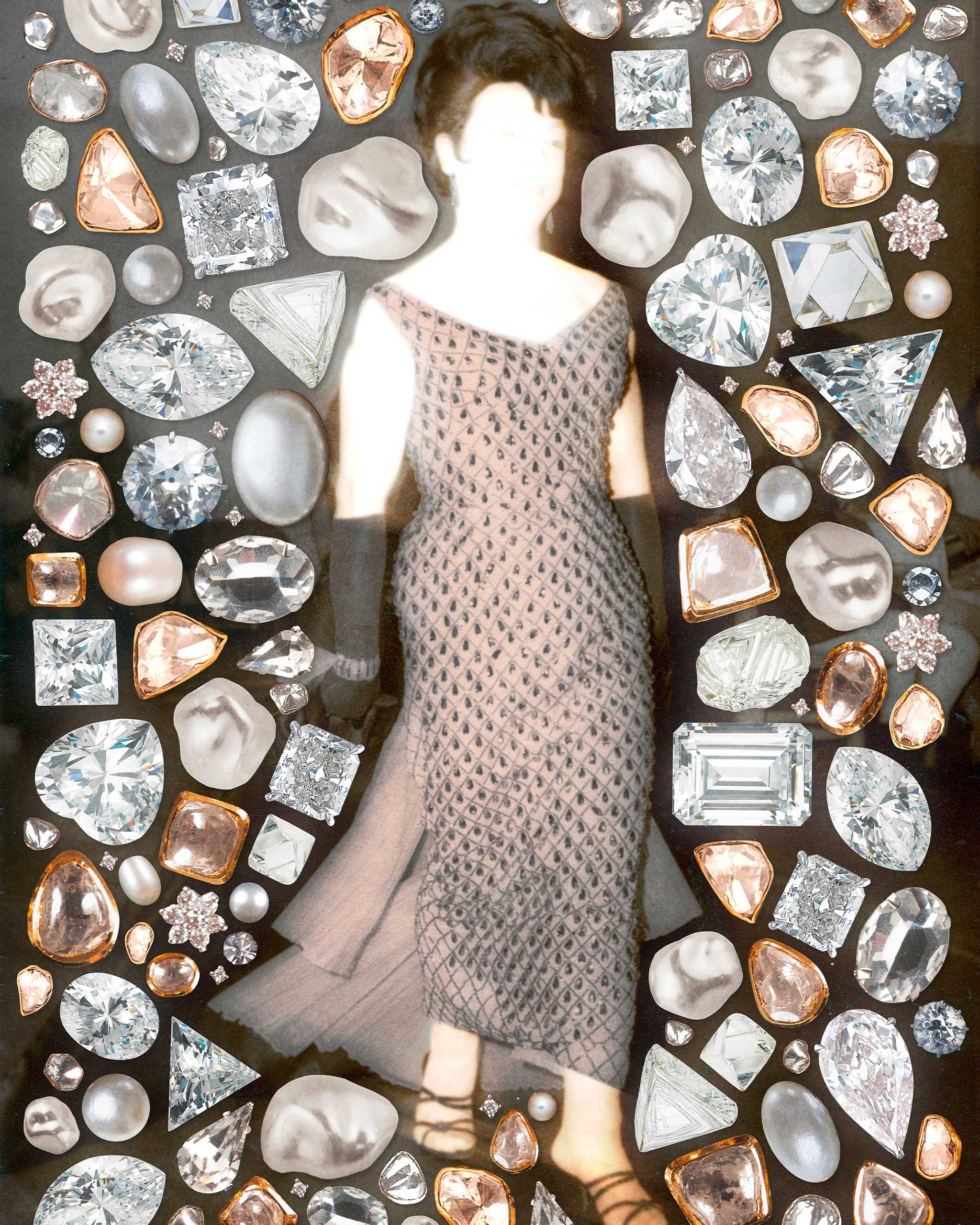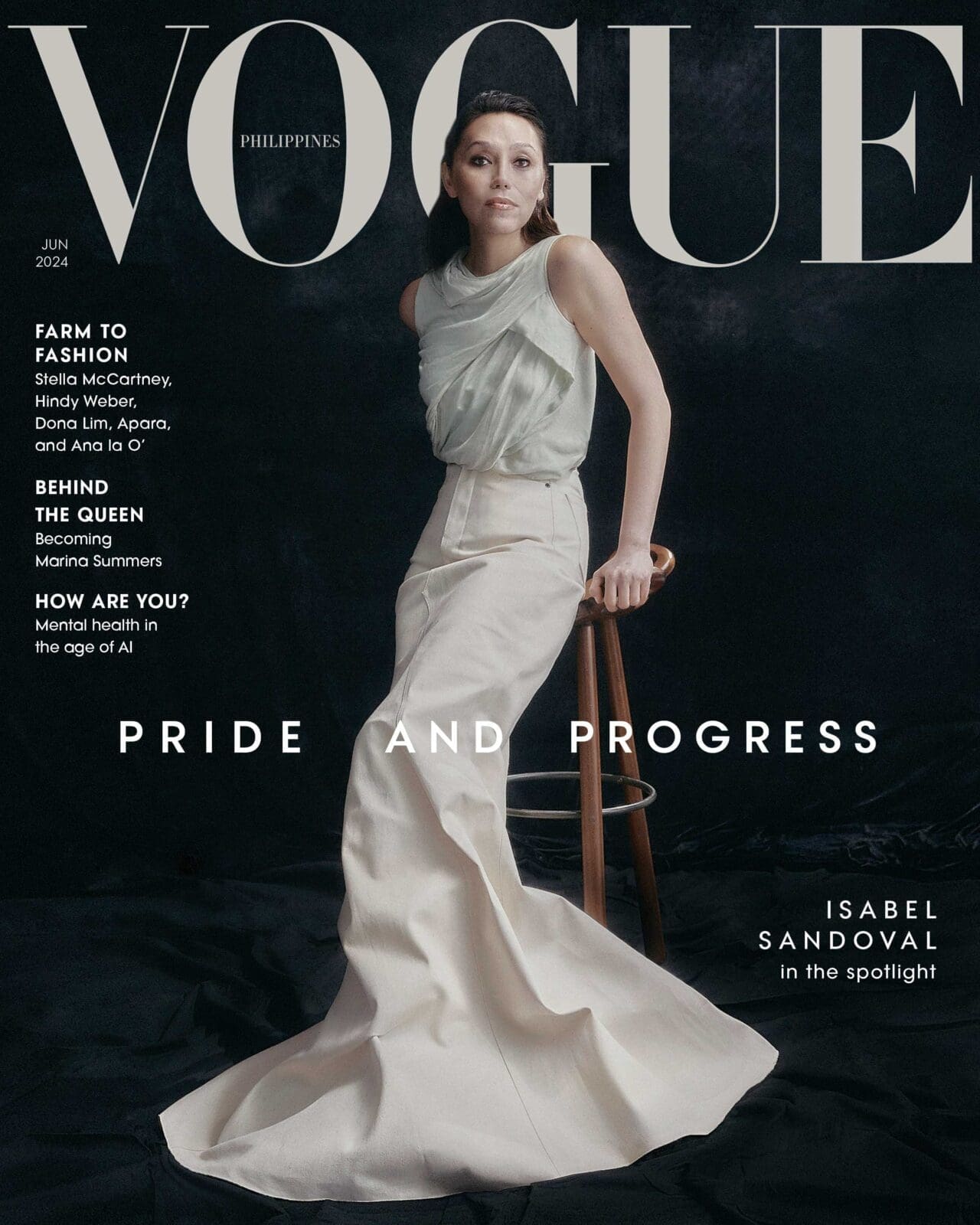Artwork by GINOE
A set of photos under an archivist’s care inspire a universe of possibilities for Philippine queer history. For the generation today, this newly discovered joy from the past inspires optimism for the future.
Ms. Philippines, with the name calligraphed on the sash over their shoulders, gazes over their audience in a pageant. It is a gaze with soft eyes, set on a strong set of shoulders, while wearing a bejeweled gown and a stack of beaded necklaces. There is unmistakable joy welling up in their eyes, as they face their crowning moment. This is one of the scenes that struck artist Ginoe after discovering a stack of vintage photographs that showed people in what we today would describe as drag.
These were personal portraits, pageants snaps, and other social events from the collection of photo archivist John Silva at the Ortigas Foundation Library. The identities of the people in the photos are unknown, and some of the pictures are unmarked. The only clues left are stamps and notes on the reverse side of the mementos, dating back as far as the 1950s.
Stories about the lives of people with diverse gender identities and expressions life had been hidden throughout history, mainly due to societal laws and prejudice. Most narratives express the community’s challenges and struggles—the common experiences of their past. Silva says that a hundred years ago, affectionate photographs between people of the same sex were rare, restrained, measured or in most cases, completely avoided.
So, when Ginoe shared the vintage photos on social media, it was quickly picked up by many to their surprise. “I feel like it’s the first time Filipino people and diasporic Filipinos saw ancestors photographed like that. [The people in the photos weren’t in hiding.] They were dancing with men, joining social events. I did not think it’s everybody else’s first time as well,” they share, in a mix of English and Filipino.
To the right of Ms. Philippines is someone wearing a bikini top paired with men’s trousers, and to the left, someone in a wig and a halter dress with a conical bustier, akin to the bullet bras of the 1940s. A daring style for anyone to wear during that time. To see these people express themselves through their clothes in that photo so freely felt like a triumph for Ginoe and so many others.
As a historian and executive director of the Ortigas Foundation Library, Silva is quick to add nuance: while we can’t conclude the gender identity of the people in the images with finality, we can assume at best that they’re gay. In his book, A Token of our Friendship, he writes about another set of affectionate male photos from the early 1900s. There, he emphasizes that “the photographs’ only role was to record a lasting image.” Within the boundaries of the photograph, viewers have to take each scene as it is.
Because of that, both Silva and Ginoe acknowledge how difficult it is to conclude the sexual orientation, gender identity, and gender expression of the people in the photos. They point out that the community who has seen the photos today are using the current generation’s vocabulary and social context to interact with a static piece of the past. Proper discussions should be done with awareness and sensitivity.
Holding a studio portrait of someone looking up at the camera in an elegant Filipiniana and stylish chignon, Ginoe points out faded spots due to sun damage, creases on the edges, and old glue still clinging on to the back, signs that suggest it was framed, placed where the sun could touch it and hopefully, treasured by whoever owned it. The fashion styles in the photos and objects in the environment also provide clues to piece together assumptions about the people’s lives during that era. In one photo, someone is wearing a floral babydoll dress and sheer tights that were popular in the 1960s; another wears a mod black dress with matching elbow-length gloves, echoing Audrey Hepburn’s classic style from that era as well. On some of the corners, the photos are stamped with logos belonging to photo studios in Quiapo, Manila.
The ‘60s were an era for social and economic recovery for the Philippines, with Manila being the center for commerce. A little bit more than a decade after World War II decimated the capital, Ginoe sees the joyful photos as a possible anchor point for their communities in the past to creatively power through complicated times.
Among the stack are pictures of a recurring set of individuals in trendy dresses and heels sitting over bottles of pilsen opened. In some photos, the same familiar faces are in their casual clothes and styled in a masculine way: trousers, buttoned shirts, and neatly coiffed hair.
“I’m a believer that [queer work] has to come from all sides,” Ginoe says. They cite the importance of struggles such as the Stonewall riots in New York during the late 60s, where the notorious first brick was thrown in the uprising against discrimination. But looking at the photos, they also believe that this is proof of the role of comfort and mundanity in dismantling homophobia. Resistance comes in many forms and in this case—joy is one of them.
For John Silva, history is always evolving. In this case, the photos are an affirmation for queer people today. “For those who are just coming out, they are happily surprised that such independence and strength existed; and that’s important for young gays who are coming out,” he says.
Looking again at the photo, Ginoe sees Ms. Philippines with their bejeweled gown, knowing eyes and strong shoulders, gazing at an audience, invisible to them, out of frame behind the camera. Another wallet-sized portrait of a man wearing a crisp barong or a cuban shirt contains one more message on the reverse side. One wonders if it was an imploration, a promise: Forget me not.
Beyond the perimeter of the vintage photographs, a whole universe of possibilities unfold. There is so much unknown, open to speculation. For queer artists like Ginoe, that space can be a creative playground that informs their art.
The existence of the collection inspires imagination. For other people who see the photos, what other possibilities might they envision for the past? As gaps in our knowledge of history continue to be filled, the photos undoubtedly prove that such joy existed and persisted in the past, inspiring optimism for the future.
Special thanks to Ortigas Foundation Library, Reyna Valmores of Bahaghari, and Judith Torres.

